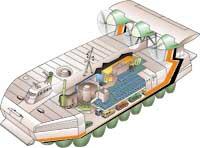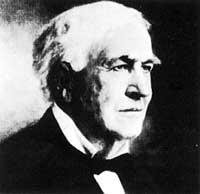Ballpoint pen
1997/04/01 Irureta Azkune, Onintza Iturria: Elhuyar aldizkaria
Many of the devices we handle seem very simple and easy to imagine. However, the invention of the tool, today common, has required much sweat and tiredness to many tireless researchers.
In 1888 a leather tanner, John Laud, patented a kind of pen at the tip of ink, especially to write about leather. It was patented but never put on sale. That pen was often put to drip the ink, and on other occasions, the ink could not be extracted.

Many inventors tried to do something similar to the pen, but all had similar problems. During the production of the useful pen, a total of 350 different pens were manufactured, although it was not invented to use comfortably. Fifty years after John Laud's attempt, two Hungarian brothers addressed the hard work of making a pen. Ladislas Biro, one of his brothers, was editor of a newspaper and was tired of always using the pen. The pen should be tinted constantly and be especially careful not to dirty the paper with ink stains. His brother Georg was a chemist and between them both decided to end the headache of the pen.
Meeting of congratulations
By 1938 both brothers had prepared the pen. To celebrate the success, the two brothers enjoyed a holiday. The dear ballpoint pen was shown by the brothers to an old man who passed by the beach. This man was president of Argentina, Augustine Justo. The president invited the two inventors to build a pen factory in Argentina. When World War II broke out in Europe, the Viros fled to Argentina. In 1943 several subsidies were obtained and pens were made. The first pens were quite uncomfortable; to get the ink well and write correctly, the pen should be taken directly into the hand.
Over time they also made a better pen. The ballpoint pen in the tip was made of sponge. From the tube came to the ball a fair amount of ink, so that it correctly dyes the paper without leaving spots. In addition, it was no longer necessary to have the pen correctly to write. The ballpoint pen of the Hungarian brothers was a success in Britain. The British Air Force, above all, valued this pen very much. The army staff needed a pen that would not pour ink at high altitudes, at low pressure, and of course, the last invention came very well. In addition, the Hungarian brothers greatly valued the purchase of pens by the Army. In times of peace they realized it, the sales diminished and the pens began to accumulate in the shops.
Just as they were lucky enough to exhibit the pen to the Argentine president, at that time businessman Milton Reynols saw Biro pens in the stores of Argentine stores. The Chicago salesman picked up the pens and took them to the United States. It was the year 1945, the Second World War ended and Biro pens failed again. Ink stains could not be avoided and, as happened before, many times the ink could not be extracted.
Ballpoint pen Paper Mate

Although the Hungarian brothers did not achieve the success of the pen, chemist Fran Seech addressed this work. After running out of work, he did tests at his home. In 1949 the chemist met the trader Patrick Frawley. The latter loved the work of the chemist and decided to market a new type of homemade ballpoint pen. This pen did not leave ink stains. The pen was called “Paper Mate” and for years hundreds of millions of copies were sold.
For the success of the trader Frawley came a new pen design. With the help of the microscope, he spent two years analyzing the existing pen designs in the market.
In 1952 he launched the “Bic” we know. The ballpoint pen was transparent, it wrote fine and no more ink than was necessary. All this was important, of course, but it is due to something else, the scraper of these pens, their cheap price.
Today in the shops there are many types of pens, but still look “Bic”. They are not pointers in quality, according, but they do their service. In the workplaces, in the offices and, as it could not be otherwise, students with a light pocket have at their disposal “Bic” red, green, blue and black.

Gai honi buruzko eduki gehiago
Elhuyarrek garatutako teknologia






